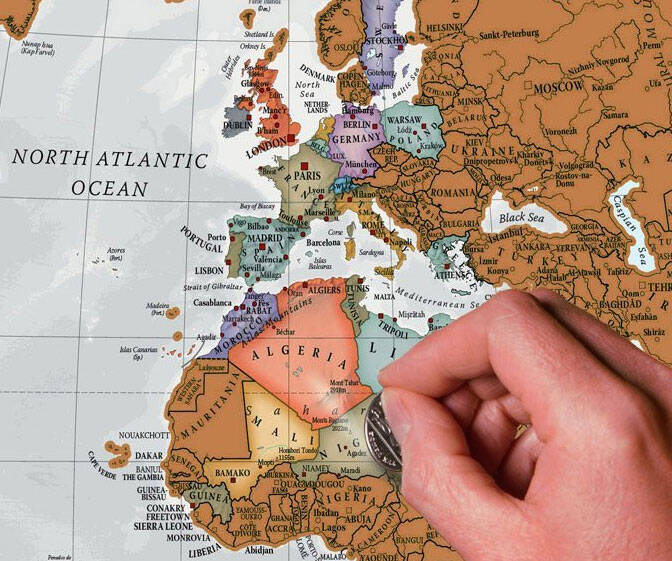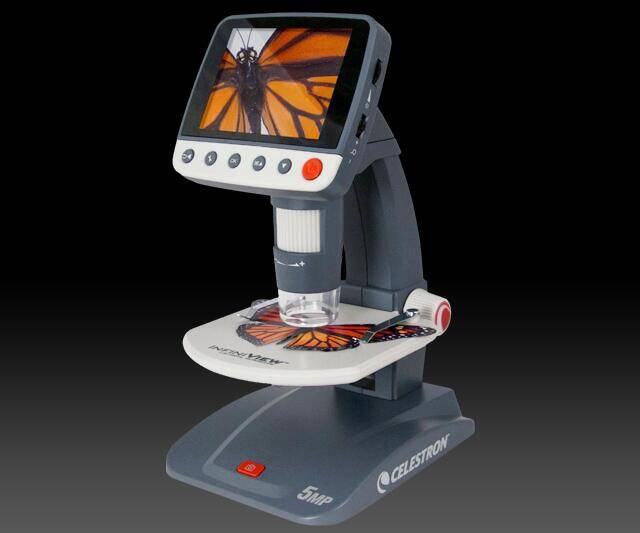Keypad Fix Remote Control Reviver | ||||||||
| ||||||||
Product Description
Restore Your Remote Don't toss it and buy a universal remote. (How many things are really universal, after all?) Try this jar of Keypad Fix, designed to clean and restore conductivity to the carbon on the keys and the copper PC board pads that make up the rubber-coated switches on remotes, game controllers, and security keypads. Contains enough to coat over 200 button contacts.Features
- Restore Your Remote Don't toss it and buy a universal remote. (How many things are really universal, after all?) Try this jar of Keypad Fix, designed to clean and restore conductivity to the carbon on the keys and the copper PC board pads that make up the rubber-coated switches on remotes, game controllers, and security keypads. Contains enough to coat over 200 button contacts.
Top Reviews
Works as advertised. . . . almost but needs a thinnerby James R. Forgione (4 out of 5 stars)
November 22, 2017
Update: 11/3/18
After letting the solution set for 12 months or so, it develops what the back panel points out as an "oil film" that causes the KeyPad-Fix [KPF] solution to bead-up. They 'blame' this on the keypad itself stating that the keypad must be dirty/oily. But cleaning the keypad does nothing for the problem. After you apply it over the keypad to be repaired, it slowly, over a few minutes, starts to bead-up as if the keypad's surface was "oily". But it's not!
Today, I found that the problem is in the KPF solution itself. It appears that over time, the solution is quite viscous and due to evaporation, becomes more so. And this causes the beading when applied to a keypad. To fix this problem add apx 3ml of isopropyl alcohol. Mix the solution thoroughly and apply as before. It will now spread over the keypad and not bead-up plus it will dry more quickly than before! Since it's a thin layer it will not flake off.
An ALTERNATE method is this: shake the KPF solution vigorously for at least 1 minute. Open the top and use the material that has attached itself to the top cover. Put a few drops of alcohol into the cover and stir the mixture. It will be thinned but not too much. It's just perfect for the keypad to be repaired. As above, it goes on with a thin coat that dries quickly. After completion, I clean out the top cover w/ alcohol and then replace the top cover on the KPF mixture. Ready for the next time. There is SO MUCH repair mixture that you can fix thousands of keypads.
This is my original review before the "bead-up" problem:
Had a 10+ yr old remote and it had four (4) bad keys. Before you apply the KPF material, I recommend that you thoroughly clean the bad key pads first with alcohol and then use a knife tip to GENTLY rough up the pad. This ensure that the material will have a clean surface to adhere to.
Apply the KPF material with a match and don't apply to much. A nice even coat. This is a bit tougher to do than is stated.
I used a lamp for apx 2 hours (within an inch of the keypad) to dry the key pads. Assembled the remote and it works as new!
Great product IMO . . . w/ the thinner applied as noted above in the update.
Careful prep is the key
by BigBri (4 out of 5 stars)
February 8, 2019
Worked very well the first try, with the right preparation. First, use a popcycle stick to thoroughly stir the material - this step is crucial in ensuring the conductive component is distributed throughout the rubber material. Using a clean q-tip, use acetone to clean the rubber surface to be redone. With the other end of the q-tip, use denatured alcohol to clean the circuit board contact area.
Use another q-tip to apply a thin layer of the material to the cleaned button contact(s). Let cure overnight before reassembling (don't shorten this step. It's "dry" almost immediately, but must be fully "cured" before us).
After careful prep, my remote worked better than when new. I barely press the button and it works instantly.
The only problem was that the lid of the jar was loose, and the black material was all over the inside of the blister packaging. Not that big of a deal, but a mess to clean up before I could make the repair. This is why I docked the product 1 star, and not the usefulness of the product itself.
It works!!!
by jedi008 (5 out of 5 stars)
July 8, 2018
This isn't for the impatient! Take your time, make sure your area is well prepared and do a few dry runs first. This stuff works! Stir it well (I use a Q-tip with no cotton on it) and then dab a little on the worn gold contact. Don't go thin, but do not glob it on. The instructions say add a layer about as thick as cellophane tape. Let it dry for a few hours, re-assemble but let it cure overnight before using the device/button. If you get any drips on the rubber, let it dry and then gently scrap it off with an Exacto knife. It should flake right off.
Patience pays off - this stuff works on car power window switches, radio buttons, remotes - anything that has gold contact switches.
I should tried this couple years ago. (A must if you own a Harmony remote)
by C. Ambriz (5 out of 5 stars)
September 20, 2018
I was able to fix my worn Harmony 600 and a 700, they just work like new after the fix. The restoration process is quite simple. Couple things are key for success. One is to clean thoroughly both parts of the contact, the second is the application of the compound. I achieved that by cleaning the silicon contact (soft one) with nail enamel remover, the copper part was cleaned just with alcohol, rubbing vigorously. I applied the compound by taking a rather small portion of the paste (mix the jar content very well before using it) from the jar with the tip of a cotton swab, then distributing evenly in the soft contact (back part of the button). I suggest to do this under a strong light, that will allow you to easily verify that the compound properly covered the entire surface of the contact. I repaired 9 buttons all of them are working right let's see if the compound film remains glued to the button for a while. There is plenty of fixing paste in the jar, I still have enough to fix all the remote controls of the neighborhood.
Works perfect. Saved replacing a Home Security keypad
by Stephen Johnston (5 out of 5 stars)
February 16, 2019
I had read some not so positive reviews so I was a little hesitant about this Keypad fix. However after reading the instructions and using a little common sense, it was clear that you really need to stir this well before use. There's 2 chemicals in the small pot, carbon and a binder. When I first started stirring it was very clumpy and the color was not even but after a minute of vigorous stir, it was all smooth and there was a visual consistency in the color. I didn't use a cotton bud, that was going to apply way too much solution... Instead I used a long pin (a needle would be perfect). First I cleaned the rubber pad (just the buttons I wanted to re-coat) with Alcohol and also cleaned the copper circuit board (used a cotton bud for that job), then applied a very small amount to the rubber pad over the top of the existing "coating". I made sure it was evenly smeared across. Then left it to dry for 24 hours and put the keypad back together. It worked 100% perfect. This was for my house alarm keypad and it's been used now constantly for over a month and I can honestly say, it's made the buttons respond like new. I was so impressed a few days after, I removed the rubber keypad again and coated a couple of buttons that kinda worked "ok" but I had not touched the first time around. Same process, stir well, apply the tiniest amount smoothly over the whole button area (like the original was coated, no more...), leave 24 hours and again, perfect results. Now the other good news, the small pot has enough fluid to coat a 1,001 keypads (and I don't mean just one button on each) or more. In fact, I'd have to say, you waste far more on stirring (what's left on the stirring stick) than you actually need to coat the rubber keypad. 100% satisfied and impressed. No more pressing firmly, no more rubber buttons sticking down due to hard pressure. Now just a soft amount of pressure on the button is all that is needed. I have a TV remote that is getting a little hard to operate and I'll be doing that shortly. I don't normally rave about things like this but I've told numerous friends about this product. Awesome. Simply put: Clean buttons and PCB, stir solution well, apply thin even coat, let it dry fully. That's it.
may work with some remotes, but not a Harmony
by Neal (1 out of 5 stars)
March 1, 2019
This product will not adhere to the rubberized keypad on the Harmony 650 remote. After a while, the conductive rubber wears out. I have tried multiple attempts to clean/oxidize it, but to no avail. I decided to give this product a try.
When the product arrived, it needed excess stirring. It had all settled into one clump on the edge of the bottle. It took 10 minutes of stirring with a plastic Q-tip stick before everything was thoroughly mixed and there were no clumps. I cleaned the contacts with %91 rubbing alcohol and let dry. The stuff beaded almost instantly to the edge of the button contact areas, and didn't cover any of the surface. After looking at reviews and thinking it was a substance on the rubber contacts themselves, I decided to wash thoroughly again with alcohol, then soap and water, then one more dose of alcohol to make sure it was clean. the stuff still beaded to the edge. I went back to the computer to look up advice, and found some people had success putting rubbing alcohol into the solution itself and that seemed to keep it from beading off the contact... I let it dry for 6 hours and put the remote back together. It seemed to work for a total of 6 hours, but then the buttons stopped working again. After taking the remote back apart, it seems the paint flaked off, and I was left with 20 or so conductive round disks of paint floating around in the remote... it did not stick. I tried several times using less/more alcohol, but the paint does not seem to want to stick to the rubber no matter what I do.
For me, this stuff is total junk and a waste of money. Unfortunately, I threw the package away so I cannot return it. this product may work for a few select remotes, but I can just suggest it is a hit or miss gamble.
Made my Meade Telescope Autostar Hand Controller like new
by raylap (5 out of 5 stars)
February 8, 2017
I had a meade autostar hand controller for my LX200GPS telescope that had the dreaded "death grip" syndrome. Had to push the buttons very hard to make contact and was uncomfortable to use. Cleaned it very well with alcohol and then applied this and let it set overnight. Now the controller works with just the slightest pressure on the button, basically like new! The only recommendation I would have is NOT to use a cotton swab, use something like a tiny scale modelers paint brush or the like, as this stuff is a tad runny, even when mixed well. And you MUST mix it well and let the control set overnight to cure. When done I sealed the bottle back up in a vacuum sealed bag for reuse.
Keypad Fix
by Ernesto Alvarado (5 out of 5 stars)
January 4, 2013
I ordered this to repair a Marantz RC-200MKII remote. The remote had several keys that quit working. i had to push really hard to make them work. I tried using a circuitwriter pen but the material did not stick to the rubber very well. I did some research and found this on amazon. Decided to give it a try.
I got it in today and read the directions. I took my remote apart and started repairing the keypad. On this remote, the rubber keypad can actually be taken out completely, making the repair much easier. what i did was use pure acetone to clean the back of the keys thoroughly. i first tested the acetone on a torn keypad to make sure acetone wouldn't destroy the rubber. i then placed a table lamp in front of me and slightly to the right of where i was working on the keypad. When i cleaned each key with acetone, i could tell it was clean by holding the pad up to the light. you could tell the cleaned key was a dull grey. once i cleaned all the keys, i started applying the fix. i read in the directions to use a cotton swab but i thought doing that would be messy and possibly apply too much. so i was using the a single tipped cotton swab for cleaning so i used the other end of it to apply the fix. i guess a matchstick would work just as well. after applying the fix on each key i would hold the pad up to the light and you could easily tell where the liquid coated the key. any areas that were missed were easy to see with the light.
The instructions say the product will dry to the touch in two hours and wait overnight before putting the remote back in service. i couldn't wait so i let the keypad airdry for 30 mins and then placed it under the lamp for another hour. the heat from the lamp helped speed up the drying process.
i put the remote back together and it works great!!!! i was able to clean off the smudges where i missed but it come off very easy. if the remote stops working then i know it's my fault because i didn't wait the suggested time but for now i am totally pleased with this product. i have 3 more of the same remote that i need to repair. each has a key or two that quit working. now with this product i'll have 4 working remotes!! i recommend this product.
Oh yeah, i forgot to mention. i repaired this remote by using only the product that was on the lid!! By using the wooden tip of the swab, it was very easy to apply it and apply it correctly!!
Keypad Fix is worth a try!
by JasonB (4 out of 5 stars)
January 20, 2016
So far so good. I have used Keypad fix on 3 tv remotes, my HTR remote and 4 cordless phone handsets. It has fixed all of them with good results for over a few months now. I do see indication on one remote that I may need to add another application in the near future. Disassemble your remote and clean it first and inspect for damage on the printed circuit board. If cleaning it works only temporarily or there is no obvious damage give this product a try. I purchased it specifically to repair my HTR remote which I was unable to source a replacement for (it is pretty old). As it produced good results in fixing it, I used it to refresh working buttons on several TV and cordless phone handsets that were getting week requiring long hard presses to make contact. Note: do stir the product well, as it does settle out quickly.
Bonded to the Dots, But Did not Conduct
by Paul Pastusek (1 out of 5 stars)
March 30, 2019
I bought CaiKote 44 and KeyPad-Fix to repair the flexible membrane keypad on my CPAP machine. I tried KeyPad-Fix first, let it dry overnight as directed and tried it the next day. It did not work at all. None of the coatings failed to bond, they just did not conduct to turn on the machine.
I cleaned off the coatings and put on CaiKote 44. Cured it under a light as directed and it has worked perfectly so far. (Two days only, about 10 - 15 button pushes so far in total.)
I will try to send an update in a few months on the CaiKote review if it is still working. Certainly will if it stops. (A new CPAP machine is $400 even with insurance so I am hoping this is a permanent fix.)
Customers Who Bought This Item Also Bought
- MG Chemicals 842AR-P Silver Conductive Pen, 8.6g
- CircuitWriter Conductive Ink, silver-based, 4g
- Logitech Harmony 350 for Universal Control of Up To 8 Entertainment Devices ( Renewed )
- ButtonWorx TV Remote Button Repair kit BW29K
- CaiKot 44, Conductive Silver/Carbon Coating for most surfaces
- MG Chemicals 841AR-P Nickel Conductive Pen, 7.5g
- MG Chemicals 8339 Rubber Keypad Repair Kit (Repairs Remote Controls)
- MG Chemicals 838AR-P Total Ground Carbon Conductive Pen, 4g
- Bose Remote Control Button Repair Kit for RC9 RC20 & RC25
- Elenco Electronics Lp-560 Logic Probe Electronics Testing Tool
*If this is not the "Keypad Fix Remote Control Reviver" product you were looking for, you can check the other results by clicking this link








